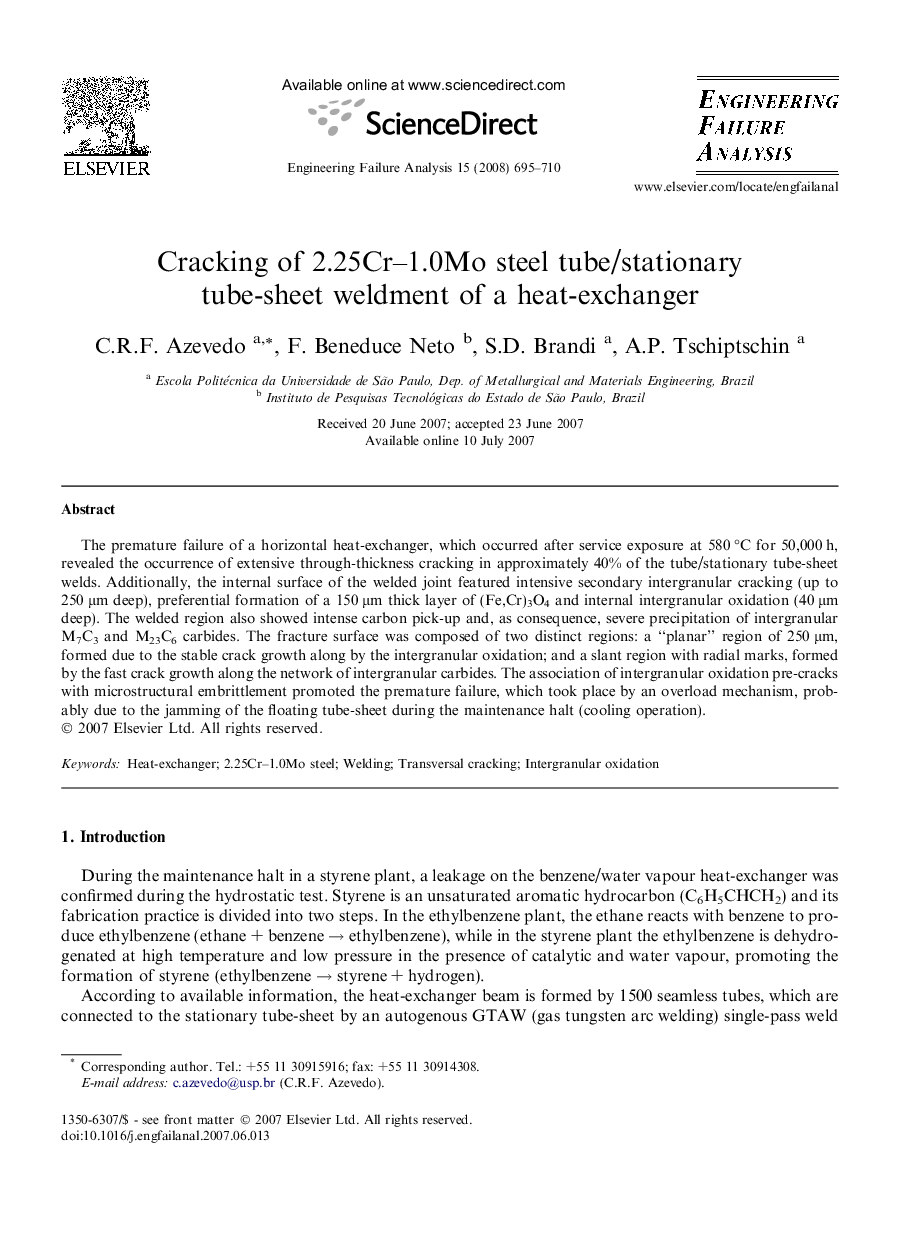| Article ID | Journal | Published Year | Pages | File Type |
|---|---|---|---|---|
| 770087 | Engineering Failure Analysis | 2008 | 16 Pages |
The premature failure of a horizontal heat-exchanger, which occurred after service exposure at 580 °C for 50,000 h, revealed the occurrence of extensive through-thickness cracking in approximately 40% of the tube/stationary tube-sheet welds. Additionally, the internal surface of the welded joint featured intensive secondary intergranular cracking (up to 250 μm deep), preferential formation of a 150 μm thick layer of (Fe,Cr)3O4 and internal intergranular oxidation (40 μm deep). The welded region also showed intense carbon pick-up and, as consequence, severe precipitation of intergranular M7C3 and M23C6 carbides. The fracture surface was composed of two distinct regions: a “planar” region of 250 μm, formed due to the stable crack growth along by the intergranular oxidation; and a slant region with radial marks, formed by the fast crack growth along the network of intergranular carbides. The association of intergranular oxidation pre-cracks with microstructural embrittlement promoted the premature failure, which took place by an overload mechanism, probably due to the jamming of the floating tube-sheet during the maintenance halt (cooling operation).
